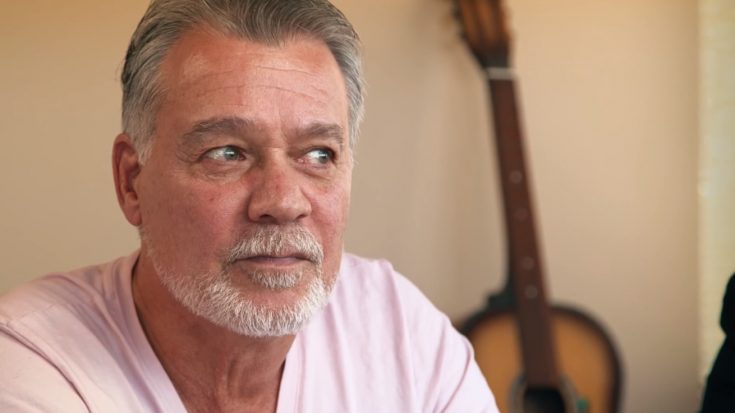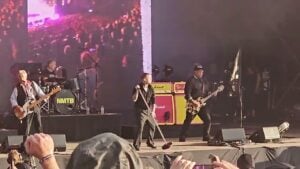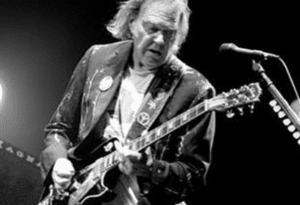Eddie Van Halen Wasn’t Happy On Only One Van Halen Album

Eddie Van Halen Interview Oct. 2016 - Mr. Holland's Opus Foundation - VanHalenVault / Youtube
Eddie Van Halen wasn’t just a virtuoso guitarist who revolutionized rock music. He was also a meticulous guardian of the Van Halen sound. Every note, every lick, every studio decision had to pass his muster.
As the band skyrocketed from clubs to stadiums, Eddie transitioned from purely shredding to shaping their music as a producer. Even after countless tours and albums, he readily admitted to creative stumbles, always striving to make the next record better.
However, one album in Van Halen’s discography stands out for Eddie’s dissatisfaction: Van Halen II, their sophomore effort. This wasn’t a case of artistic differences or a change in musical direction. The culprit, according to Eddie, was a lack of control.
“We weren’t allowed any input on the mix,” he lamented. “But ultimately, we were just plain rushed.” Let’s delve deeper into why this album left Eddie feeling frustrated, and how it impacted the band’s future approach to recording.
The unexpected success of Van Halen’s debut
Van Halen’s self-titled debut album burst onto the scene from the heart of California, a breath of fresh air that revitalized the hard rock genre. Eddie’s innovative guitar work, particularly his pioneering use of tapping, redefined what was possible on the instrument and inspired countless aspiring musicians.
This magic, however, often comes from a place of pure creation, unburdened by the pressure of legacy. With no sky-high expectations hanging over them, the band simply captured the energy of their live performances.
They recorded most of the songs that were already staples in their setlist, knocking them out in a short window between tours.
https://twitter.com/TheRockDude99/status/1766250265148305594
Chasing lightning in a bottle
The seismic impact of Van Halen’s debut album left the band with a daunting question: how do you follow up a genre-defining masterpiece? In the fast-paced world of rock and roll, the answer seemed simple – capture the same energy once again. Fresh off their first major US tour, Van Halen returned to the studio determined to recreate the magic.
Van Halen II embraced a familiar formula. It featured another classic rock cover, this time Linda Ronstadt’s “You’re No Good”, mirroring the strategy used with The Kinks’ “You Really Got Me” on the debut.
However, the recording process lacked the carefree spirit of the first album. Eddie expressed frustration with the rushed production schedule, lamenting to Guitar World, “We weren’t allowed any input on the mix… We just plain rushed.”
This pressure even impacted the final track, with Eddie and drummer Alex Van Halen wanting to continue jamming but being forced to cut the recording short due to a deadline.
Evolution and experimentation on Van Halen II
Despite the constraints of a rushed recording process, Van Halen II showcased the band’s natural musical evolution. Tracks like “Dance the Night Away” hinted at the burgeoning glam metal genre, taking their signature powerful sound and injecting a dose of infectious pop energy – a sound perfectly suited for the soon-to-explode MTV.
This shift wasn’t simply commercial; it demonstrated the band’s willingness to experiment within their established hard rock framework.
Eddie Van Halen, ever the innovator, used “Spanish Fly” to address lingering doubts about his technical prowess. This track showcased his mastery of tapping on a flamenco-inspired acoustic guitar, silencing critics who questioned the depth of his skills.
While some elements of Van Halen II echoed their debut, the album also revealed the band’s creative restlessness and a willingness to explore new sonic territory.
A formula, not a failure
While Van Halen II may not have captured the lightning-in-a-bottle quality of their debut, it served as a stepping stone on their path to musical dominance. The limitations of the recording process resulted in a sound that mirrored their first album, but this wasn’t necessarily a bad thing.
In a way, Van Halen II became the ultimate example of the “if it ain’t broke, don’t fix it” mentality. It delivered a potent dose of the hard rock energy that fans craved, albeit without the same level of innovation present on the debut.
However, the creative spark that would truly define Van Halen wouldn’t be fully ignited until later albums like Women and Children First. This record would finally give Eddie the freedom to experiment in the studio, pushing the band’s sound in new directions.
Van Halen II, on the other hand, represented a period of consolidation, a chance to solidify their signature sound before venturing further afield.












